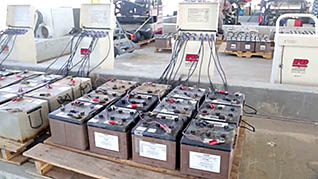
COURSE OVERVIEW
Federal universal waste regulations were created to enforce legal and safe methods of dealing with hazardous waste, thus making it easier to store, reuse, and process certain wastes. The California Department of Toxic Substances and Control (DTSC) expanded the EPA's definition of universal waste to seven classes: batteries, lamps with mercury or lead, mercury-containing devices, electronic devices, cathode ray tubes, CRT glass, and non-empty aerosol cans. This course provides a refresher of the standards and techniques needed on the job when working with universal waste. This course starts by defining universal waste, including the additional California-specific definitions of universal waste. Methods for handling universal waste are demonstrated, as well as how to prepare and respond to an emergency with hazardous materials. This training course also provides details on how certain parts of universal waste can be recycled or reused. Use this course to help your team obtain a better understanding of how California defines universal waste..
KEY AUDIENCE
- Anyone who works with or around universal waste in California
COURSE TOPICS
- Compliance: EPA
- Safety: Hazardous Waste and Hazwoper
WORKPLACES
- Hazardous Waste Operations
- Manufacturing Plant
- Warehouse
CATEGORIES
Notice: Undefined index: Categories in C:\playground\CoursePage.php on line 61
COURSE DETAIL
| COURSE ID | Notice: Undefined index: ID in C:\playground\CoursePage.php on line 71 |
| TIME | 13- 30 MIN |
| QUESTIONS | 17 |
| LANGUAGES | en |
| VIDEO FORMAT | HD |
| CAPTIONS | TRUE |
| LESSONS | 5 |
| BOOKMARKING | YES |
| FEEDBACK | YES |
| MICROLEARNING | FALSE |